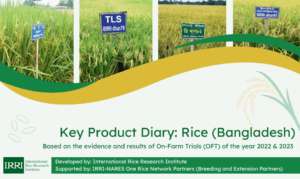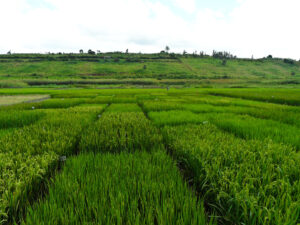Noel Magor, Nollie Vera Cruz, Roland Buresh, and J.K. Ladha boxed their papers and passed the baton on to their successors in 2017. These Pioneer Interviews revisit their combined 119 years of service to IRRI. Here, in Part 2, I explored how Noel and Nollie made a difference during their days at the institute.
 Integrating agronomy with political science
Integrating agronomy with political science
Noel Magor spent the first 14 of his 24 years associated with IRRI in various projects in Bangladesh to improve that country’s rice production and the livelihood of its farmers. He followed with 10 years at headquarters leading the Training Center and enhancing the Rice Knowledge Bank to help prepare the next generation of scientists to meet future challenges.
From a young age, he was involved in agriculture, growing up in Australia on his family’s poultry and almond farm (see Steinbeck and a calling).
“My father repeatedly won competitions with his chickens and produced beautiful almonds using green manure and irrigation,” he said. “I helped with the almond harvest and gathering eggs, among other chores, which included growing my own tomatoes in the summertime.”
After earning a bachelor’s degree in horticulture from Adelaide University, Noel set off to Wollo Province in northern Ethiopia, where a devastating famine had struck the year before. As a volunteer, he assessed how the famine affected village families and sought ways to rehabilitate the most destitute by providing grain through food-for-work projects and by distributing seeds. Then, along with his wife Rose, he spent 7 years (1977-84) with HEED Bangladesh, a national NGO devoted to health, education, and economic development in the country.
“I was interested in rural development in northeastern Bangladesh, but I didn’t understand the rice system there and farmers’ varietal choices,” Noel said. “So, that led me to get a master’s degree in agronomy via Sydney University, in which for my thesis I studied with farmers of the area their rice-based cropping patterns.”
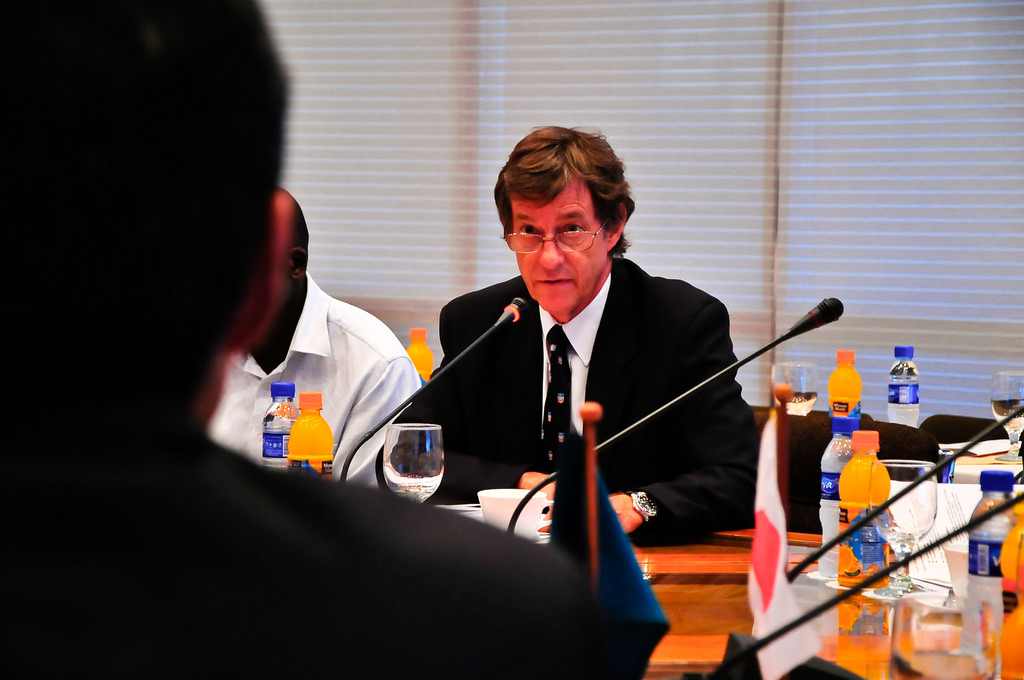
Knowing that there was a lot of work to do in Bangladesh, Noel took the opportunity to stay in the country by becoming associated with IRRI for the first time. “In 1985, I accepted the position of systems agronomist to work on joint research between IRRI and the Bangladesh Rice Research Institute (BRRI). During the next 7 years, I liaised with national institutions and worked with the national scientists at BRRI, where I learned a lot about farming systems principles.”
Then, Noel went to Adelaide University to earn a PhD in political science in 1996. Why political science? Noel explained, “During my time with HEED, I had become very aware that the NGOs, on the whole, were focusing on landless and nonagriculture-based people while the extension services were focusing on the more well-to-do farmers. I felt that a political science background might help me better understand the vulnerability of neglected smaller farmers and how to find opportunities for them. A 3-year research fellowship with an Australian University Postdoctoral Award on small farmers and business added a further dimension to potential development options for small farmers.”
After that, it was back to working for IRRI again in Bangladesh, when, in 1999, he was selected to manage the Poverty Elimination Through Rice Research Assistance (PETRRA) project. Funded by the U.K.’s Department for International Development, Noel managed the nearly 10 million-pound PETRRA project.
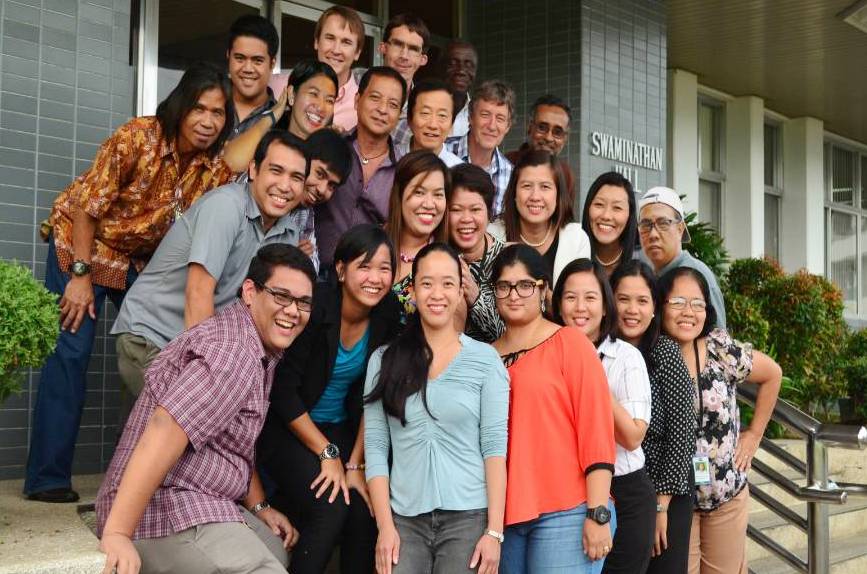
“It involved IRRI and BRRI overseeing a unique competitive research process over 5 years that attracted around 400 concept notes, ultimately leading to some 45 projects that engaged around 50 organizations, including the private sector and NGOs,” Noel said. “The projects involved social science research coupled with national rice policy dialogues, technology development with hybrid rice, salinity and flood tolerance, nutrient and water management, rice-duck farming, seed system development, rodent control, women in agriculture, and innovations in extension that were inclusive of marginal farmers. This all contributed to the development of Bangladesh’s agricultural sector. I consider PETRRA to have really made a difference and it’s one of the highlights of my career.
Bangladesh’s progress in agriculture can be considered a real success story,” Noel added. “But, when you look at its population, the reduction in land devoted to agriculture, climate change, and factors tied to disasters, etc., the challenge moving forward is to maintain food security.”
During his last 5 months before retirement, Noel returned to Bangladesh after a 10-year absence to serve as IRRI’s interim country representative. “It was a priority to re-open the BRRI-IRRI Friendship Centre as a symbolic gesture to show how important it will be to engage with BRRI, an essential partner, to meet the future challenges.”
In 2006, Noel moved to headquarters to head the Training Center, rebranded IRRI Education in 2016.
“Some people forget that IRRI is both a research and training institution. Educating and training a new generation of rice scientists who can tackle the challenges of the future are incredibly important roles for IRRI,” he emphasized. “When I was at BRRI, I saw the tremendous hopes that young scientists had as they went off to IRRI to do their thesis work, giving them the confidence they must have to meet the future. The short courses are like topping on the cake, adding tremendous value whether they are in specific skills in plant breeding or pest management or in terms of advances that may not have been covered during university studies.”
During the last 10 years under Noel’s guidance, the Training Center built a self-funding model with subsequent growth in the number of scholars. “We’ve offered exciting new courses, such as Rice research to production, Rice survivor, African extension and seed systems training, and advanced plant breeding, agro-ecology, and pest management, among others.
With this strengthened foundation, Noel believes the concept of IRRI Education will be a game changer because the institute has really decided to invest in education. (See Reimagining agricultural education.) “I think this re-energized effort dates back to the food crisis in 2008 when the rice price reached USD 1,000/ton. We observed then that many countries had lost their research capabilities through aging staff and young people not coming in. So, building new growth for the future has become so very important.”
Noel capped his career at IRRI as head of the Impact Acceleration Unit. “Donor demand for impact is not a recent phenomenon, but rather a discourse that has strengthened for more than 30 years,” Noel concluded. “Donors have become more demanding and IRRI has responded. To achieve the ambition of greater scientific impact, IRRI Education and Impact Acceleration will be important cornerstones.”
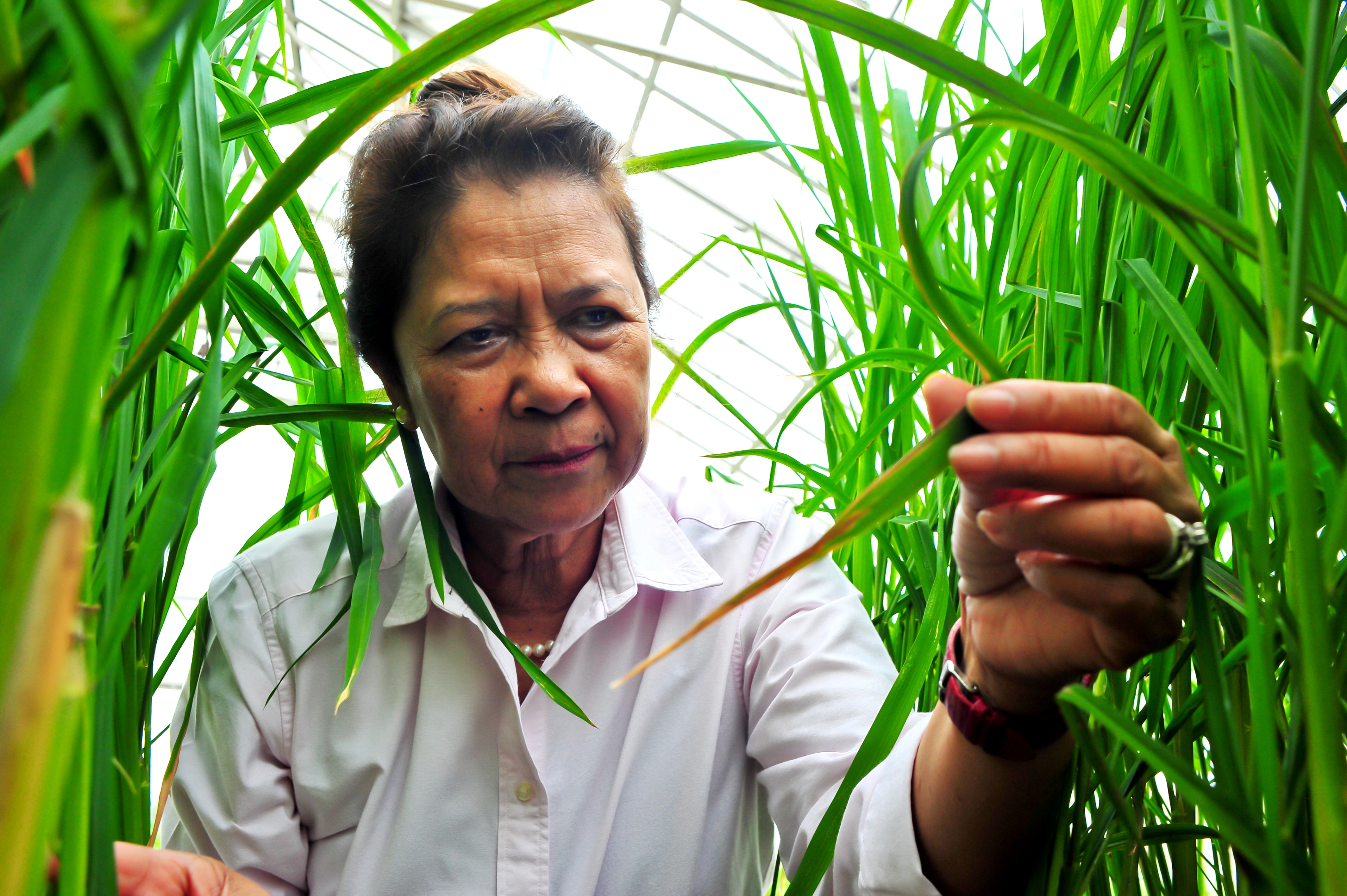
The best of both worlds
Hailing from Tanauan, Batangas, in the Philippines, Casiana “Nollie” Magpantay Vera Cruz spent 34 productive years at IRRI, primarily as a plant pathologist.
“As you may know, Batangas was once famous for its coffee plantations,” said Nollie. “But the trees were totally devastated by coffee rust (Hemileia vastatrix) toward the end of the 19th century.” The oldest of five siblings, the other four being brothers, she was way too late to do anything about coffee diseases, but would be destined to fight the disease pantheon of an even more important crop—rice! “Initially, I was more interested in studying microbiology, which was my major as an undergraduate in agriculture at the University of the Philippines Los Baños (UPLB), but, ultimately, I got my M.S. degree in plant pathology at UPLB.”
Starting at IRRI in 1975 as a research aide in the Department of Plant Pathology, she began her journey to gain a wide range of expertise that eventually included finding host-plant resistance to rice diseases, overseeing bacterial and fungal disease screening for the breeding programs for different rice ecosystems, managing rice seed health efforts, diagnosing seed-borne pathogens, and studying root health in aerobic rice.
She had the unique circumstance of experiencing firsthand two different worlds at the institute, having been both a nationally recruited scientist (NRS) for 16 years and a globally recruited scientist (GRS) for 18 years.
“The dichotomy of the GRS and NRS is a given,” Nollie said. “However, I think the relationships and level of respect that the NRS have among the entire staff are improving. Without the NRS, IRRI would not be the successful institute that it is today. The local staff members have channeled their energy and efforts to achieve IRRI’s goals as much as anyone else.”
Nollie is certainly among the pioneer female scientists at IRRI. By the time she had moved up the ladder among the NRS to the assistant scientist level in 1991, there were still only two female IRS at IRRI (see A juggling act: Gender barriers and molecular maps). “I left IRRI in 1991 to begin working on my PhD in plant pathology with Dr. Jan Leach at Kansas State University in the U.S., supported throughout by the Rockefeller Foundation Rice Biotechnology Program,” Nollie said.
After earning her PhD, she did a stint as an associate professor of plant pathology at UPLB. By the time she rejoined IRRI as a plant pathologist at the IRS level in 2000, she was part of a growing group of globally recruited women numbering around 10 at the time. Of course, since then, the GRS female-male ratio has improved even more.
“I really didn’t feel that being a female staff member as an NRS during the 1970s and ‘80s and later as a GRS after 2000 was any kind of problem for me,” Nollie exclaimed. “I was given many opportunities. When IRRI was looking to increase the number of women in upper management in the mid-2000s, Achim Dobermann, then deputy director general for research, even asked me if I wanted to get into management. I said, ‘no, I preferred working in science.’” And work in science she did, studying a myriad of rice foliar, grain, and root diseases, but especially the two most insidious ones that have given Asian farmers headaches for many years—bacterial blight (caused by Xanthomonas oryzae pv. oryzae) and rice blast (caused by the fungus Magnaporthe oryzae). (See Beating blight and Beating blast.)
“I worked with the IRRI pathology team on bacterial blight for 15 years during my first stint at IRRI as an NRS,” Nollie said. “Back then, my mentor, Tom Mew (see The Tao of Tom), and I found bacterial blight to be a model disease system to study for the cereals, especially because of its host-pathogen interactions. Our team learned about pathogen variability and identifying the diversity of pathogen populations to help develop rice plant resistance.”
Rice blast got a close second billing for the pathologists’ attention.
“Hopefully, our strategy for developing bacterial blight resistance will work for blast as well,” Nollie said. “This involves not only finding major genes for resistance but combining both specific and nonspecific resistance.” Nollie pointed out that both bacterial blight and blast are still with us after many, many decades because of their ever-changing pathogen populations. However, advances in sequencing have brought scientists to the fore of understanding both the rice and pathogen genomes, providing them with strategies and tools that are revolutionizing the gene-based management of these diseases. “We need to stay ahead of these shifty enemies by refining our management strategies to fight them,” she concluded. (See A tool that tracks and stops bacterial blight outbreaks in rice.)
Perhaps the capstone of Nollie’s pathology legacy at IRRI is her participation as a technical writer and editor, along with Dr. Mew and other pathologists, in the development of IRRI’s online resource Rice diseases: their biology and selected management practices.
“Bringing up to date the classic 1985 second edition of the book Rice diseases by S.H. Ou, it covers the importance of 80 plant diseases in rice production,” Nollie said. “The cleverness and beauty of this online resource are that any interested rice pathologist can add new information, make revisions, and improve it, and that users can be assured that what they are accessing is absolutely the latest information available.”

As overall leader of the Heirloom Rice Project, Nollie worked to get some of the Cordilleras traditional rice varieties on the menus of Manila’s finest restaurants. (Photo by G. Hettel, IRRI)In recent years at IRRI, Nollie also led the joint Philippine Department of Agriculture‒IRRI Heirloom Rice Project, which aimed to raise productivity and enrich the legacy of traditional rice. “We began making a difference by empowering the communities in unfavorable rice-based ecosystems of the Cordilleras in the northern part of the country,” she said (see Women who moved mountains).
“A very important part of the project’s first phase was helping local farmers produce quality heirloom rice seeds to increase their harvests for selling to restaurants in Manila that are promoting unique rice dishes and the niche export market,” Nollie said. “Because these heirloom varieties have special qualities different from common table rice, I see very high potential for them to be purchased by customers willing to pay more, thus significantly increasing farmers’ income and perhaps even enticing the upcoming younger generation to stay on the farm.”
Among the various heirloom rice varieties, Nollie likes the purple varieties most, especially the glutinous ones.
“They are so different in terms of texture and probably nutrition as well,” she said. “And, they are delicious.”
Unlike her retiring colleagues, Noel, Roland, and J.K., Nollie will not be straying very far from IRRI by staying in the Los Baños area with her husband, Ver. So, she still can be seen on her old stomping grounds from time to time. Currently, she is serving as an IRRI consultant to complete a few ongoing projects.
Challenges for IRRI as it nears its 60th birthday
Noel and Nollie were asked what they saw as the institute’s biggest challenge as it nears its 60th anniversary in 2020.
“For IRRI moving forward, its challenge as an international not-for-profit institution is to continually recreate itself to be relevant,” insisted Noel. He added that IRRI has tremendous social capital with governments. “The institute must use this leverage,” he said, “to serve as a platform on which these governments can come together around the issue of food security where rice is a very important crop.”
Nollie thought along the same lines as Noel. “We must re-invent ourselves to get more funding for bigger projects run by teams of scientists,” she said. “Hopefully, the ongoing reorganization of the institute will facilitate this.”
Read about the achievements of Roland and J.K. in Making a difference (Part 1).
__________
Mr. Hettel is a senior consulting editor and content specialist at IRRI.





